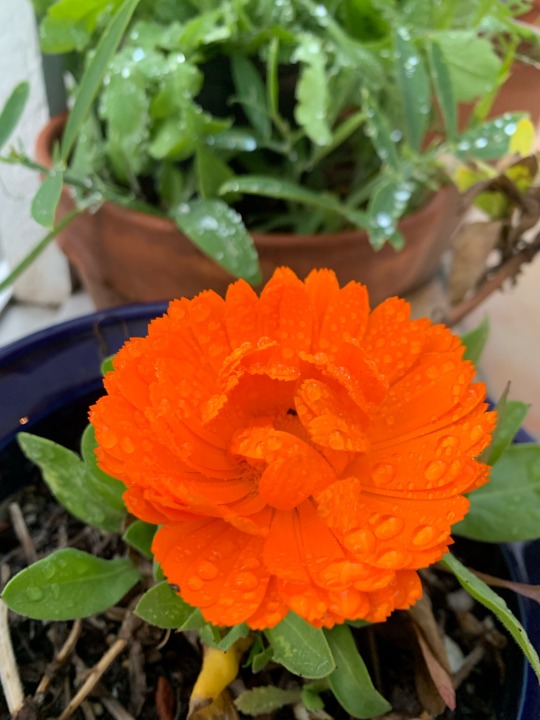#Multipet
Text
Best Dog Toy You Should Know About in 2022
Did you know that there is the best dog toy available that help your dog become more social? Did you know that there are so many different kinds of dog toys out there? If you answered YES to all of the above, then you’re clearly one of the lucky folks who owns a golden retriever.



1 note
·
View note
Text

When you've got a weird unpredictable force field floating around your head, but the Jeffers box came and THERE'S A NEW UNICORN?? Yeah, yeah, cone of shame, whatever. UNICORN.
#guinevere#cocker spaniel#dogblr#smush mouth#squish face#the Gwyn-sized unicorn#24 inch multipet unicorn toy#princess in her hennin and veil#the Blunder-Buss#the butt hurts#bad photography
32 notes
·
View notes
Text










#id in alt#the sitting lamb chop is weird cause it's a dif brand#it's aurora (human toy brand) and not multipet (dog toy brand) and so the materials are different#and she has beans in her
12 notes
·
View notes
Text
🌑Hi, I'm Mx. Raine! I'm your local vampiric teacher!🌑
Some information!!
I'm Nonbinary/Transmasc!! I use xenogenders!
My pronouns are He/They/Xe/It/Pup/She!! These pronouns make me feel good!!
This is just a side blog for age/dre/re, and pet/re/dre!! Just like my main blog!!
Other names: Seraphim, Tobi, Fern, River!
My Dms are always open!! So feel free to get to know me!!
For this blog I will end blogs with 🪻!!
DO NOT INTERACT if PRO-SHIP, Map, Homophobic, racist, ableist, Religion shame, abusive, anti-neopronoun, anti-therian, anti-regression, NSFW, Kink, and transphobic!!!
That is all for now!🪻


#age dreamer#age dreaming#pet dreaming#pet dreamer#sfw petre#pet regressor#petdre#pet regression#nymph regression#multipet regressor#goth age dreamer#goth agedre#goth pet dreamer#goth petdre#goth agere#goth age regressor#Spotify
12 notes
·
View notes
Text



Bootleg Googles found at Family Dollar. Little dude is a dog toy, but he's soft and green so I love him. Brand is Multipet and he was about 3.50 USD.
12 notes
·
View notes
Note
I heard a rumor that you think youre hot shit. That youre a real cool individual out here. You think youre so tough how about we battle? How about we duke it the fuck out thats right bazinga a bazinga! Gimme your best shot pal, muster up the last ounce of your limp, weak ass, no chordal synchrosity havin ass bazinga. Say it. Say bazinga. I dare you. I double dog dare you. You wont. Punk. 😤
Cactus
Article Talk
Language
Watch
Edit
This article is about the plant family. For the former genus Cactus, see Mammillaria, Melocactus, and Opuntia. For other uses, see Cactus (disambiguation).
"Cacti" redirects here. For the software, see Cacti (software).
A cactus (pl: cacti, cactuses, or less commonly, cactus)[3] is a member of the plant family Cactaceae,[a] a family comprising about 127 genera with some 1750 known species of the order Caryophyllales.[4] The word cactus derives, through Latin, from the Ancient Greek word κάκτος (káktos), a name originally used by Theophrastus for a spiny plant whose identity is now not certain.[5] Cacti occur in a wide range of shapes and sizes. Although some species live in quite humid environments, most cacti live in habitats subject to at least some drought. Many live in extremely dry environments, even being found in the Atacama Desert, one of the driest places on Earth. Because of this, cacti show many adaptations to conserve water. For example, almost all cacti are succulents, meaning they have thickened, fleshy parts adapted to store water. Unlike many other succulents, the stem is the only part of most cacti where this vital process takes place. Most species of cacti have lost true leaves, retaining only spines, which are highly modified leaves. As well as defending against herbivores, spines help prevent water loss by reducing air flow close to the cactus and providing some shade. In the absence of true leaves, cacti's enlarged stems carry out photosynthesis. Cacti are native to the Americas, ranging from Patagonia in the south to parts of western Canada in the north—except for Rhipsalis baccifera, which also grows in Africa and Sri Lanka.Cactus
Temporal range: 35–0 Ma
PreꞒ
Ꞓ
O
S
D
C
P
T
J
K
Pg
NLate Eocene - RecentVarious CactaceaeScientific classificationKingdom:PlantaeClade:TracheophytesClade:AngiospermsClade:EudicotsOrder:CaryophyllalesFamily:Cactaceae
Juss.[1]Subfamilies
Cactoideae
Maihuenioideae
Opuntioideae
Pereskioideae
See also Classification of the CactaceaeSynonyms[2]
Opuntiaceae Desv.
Leuchtenbergiaceae Salm-Dyck ex Pfeiff.
Cultivated cacti in the Singapore Botanic Gardens
Many species of cactus have long, sharp spines, like this Opuntia.
Cactus spines are produced from specialized structures called areoles, a kind of highly reduced branch. Areoles are an identifying feature of cacti. As well as spines, areoles give rise to flowers, which are usually tubular and multipetaled. Many cacti have short growing seasons and long dormancies and are able to react quickly to any rainfall, helped by an extensive but relatively shallow root system that quickly absorbs any water reaching the ground surface. Cactus stems are often ribbed or fluted, which allows them to expand and contract easily for quick water absorption after rain, followed by retention over long drought periods. Like other succulent plants, most cacti employ a special mechanism called "crassulacean acid metabolism" (CAM) as part of photosynthesis. Transpiration, during which carbon dioxide enters the plant and water escapes, does not take place during the day at the same time as photosynthesis, but instead occurs at night. The plant stores the carbon dioxide it takes in as malic acid, retaining it until daylight returns, and only then using it in photosynthesis. Because transpiration takes place during the cooler, more humid night hours, water loss is significantly reduced.
Many smaller cacti have globe-shaped stems, combining the highest possible volume for water storage with the lowest possible surface area for water loss from transpiration. The tallest[b] free-standing cactus is Pachycereus pringlei, with a maximum recorded height of 19.2 m (63 ft),[7] and the smallest is Blossfeldia liliputiana, only about 1 cm (0.4 in) in diameter at maturity.[8] A fully grown saguaro (Carnegiea gigantea) is said to be able to absorb as much as 200 U.S. gallons (760 l; 170 imp gal) of water during a rainstorm.[9] A few species differ significantly in appearance from most of the family. At least superficially, plants of the genera Leuenbergeria, Rhodocactus and Pereskiaresemble other trees and shrubs growing around them. They have persistent leaves, and when older, bark-covered stems. Their areoles identify them as cacti, and in spite of their appearance, they, too, have many adaptations for water conservation. Leuenbergeria is considered close to the ancestral species from which all cacti evolved. In tropical regions, other cacti grow as forest climbers and epiphytes (plants that grow on trees). Their stems are typically flattened, almost leaf-like in appearance, with fewer or even no spines, such as the well-known Christmas cactus or Thanksgiving cactus (in the genus Schlumbergera).
Cacti have a variety of uses: many species are used as ornamental plants, others are grown for fodder or forage, and others for food (particularly their fruit). Cochineal is the product of an insect that lives on some cacti.
Many succulent plants in both the Old and New World – such as some Euphorbiaceae (euphorbias) – are also spiny stem succulents and because of this are sometimes incorrectly referred to as "cactus".[citation needed]
Morphology
Adaptations for water conservation
Taxonomy and classification
Phylogeny and evolution
Distribution
Reproductive ecology
Uses
Conservation
Cultivation
Notes
References
Bibliography
External links
#This is just a copy paste of the Wikipedia article for cactus#I’m pretty sure this is some weird troll or whatever looking at the blog but yknow
14 notes
·
View notes
Text

Happy equinox! It’s finally time to awaken from growing moss face down in the woods all winter.
Image description. A vivid orange multipetaled blooming calendula is flecked with raindrops. Its soil, leaves, and blue ceramic pot are visible. The edges of a terracotta pot, blurred green leaves, and beige tile are visible in the background.
#jewitch#witchcraft#garden#gardenblr#garden witch#gardening#green witch#thefifthacre#cottagecore#spring#spring equinox#equinox#calendula#medicinal herbs#medicinal flowers
3 notes
·
View notes
Note
A cactus (pl. cacti, cactuses, or less commonly, cactus)[3] is a member of the plant family Cactaceae (/kæˈkteɪsiˌaɪ, -siːˌiː/),[a] a family comprising about 127 genera with some 1750 known species of the order Caryophyllales.[4] The word cactus derives, through Latin, from the Ancient Greek word κάκτος (káktos), a name originally used by Theophrastus for a spiny plant whose identity is now not certain.[5] Cacti occur in a wide range of shapes and sizes. They are native to the Americas, with the exception of Rhipsalis baccifera, which is also found in Africa. Cacti are adapted to live in very dry environments, including the Atacama Desert, one of the driest places on Earth. Because of this, cacti show many adaptations to conserve water. For example, almost all cacti are succulents, meaning they have thickened, fleshy parts adapted to store water. Unlike many other succulents, the stem is the only part of most cacti where this vital process takes place. Most species of cacti have lost true leaves, retaining only spines, which are highly modified leaves. As well as defending against herbivores, spines help prevent water loss by reducing air flow close to the cactus and providing some shade. In the absence of true leaves, cacti's enlarged stems carry out photosynthesis. Cacti are native to the Americas, ranging from Patagonia in the south to parts of western Canada in the north—except for Rhipsalis baccifera, which also grows in Africa and Sri Lanka. Cactus spines are produced from specialized structures called areoles, a kind of highly reduced branch. Areoles are an identifying feature of cacti. As well as spines, areoles give rise to flowers, which are usually tubular and multipetaled. Many cacti have short growing seasons and long dormancies and are able to react quickly to any rainfall, helped by an extensive but relatively shallow root system that quickly absorbs any water reaching the ground surface. Cactus stems are often ribbed or fluted with a number of ribs which corresponds to a number in the Fibonacci numbers (2, 3, 5, 8, 13, 21, 34 etc). This allows them to expand and contract easily for quick water absorption after rain, followed by retention over long drought periods. Like other succulent plants, most cacti employ a special mechanism called "crassulacean acid metabolism" (CAM) as part of photosynthesis. Transpiration, during which carbon dioxide enters the plant and water escapes, does not take place during the day at the same time as- ah. So sorry B! It seems that your funds may be insufficient my friend! If you'd like for one play coin I can continue my reading of this Wikipedia article from Wikipedia, the free online encyclopedia!
. . .
play...coin?
. . .
I don't think i've got any playcoins
outta luck on that
2 notes
·
View notes
Link
Check out this listing I just added to my Poshmark closet: Companion Multipet Station Wagon with Tree Latex Squeaking Dog Toy - NWT.
0 notes
Text
Top Picks: Multipet Lambchop Plush Dog Toy
Are you looking for the perfect toy for your furry best friend? Look no further than the Multipet Plush Dog Toy Lambchop! This classic Shari Lewis TV puppet is now available as a plush toy for your dog to enjoy. Standing at 10 inches tall and featuring a squeaker for added fun, this Lambchop toy is sure to become a favorite in your pup’s toy collection. In this blog post, we’ll take a closer look…

View On WordPress
0 notes
Link
Check out this listing I just added to my Poshmark closet: Lamb Chop" Plush Cat Toy With Catnip Pet Fun Multipet.
0 notes
Text
Pet Toys Market Size to Surpass $12.63 Billion by 2029
New Post has been published on https://petn.ws/OgypB
Pet Toys Market Size to Surpass $12.63 Billion by 2029
Key companies covered in pet toys market are Kong Company (S), Benebone LLC (U.S.), Petmate (S.), Ethical Products, Inc. (S), Petsport USA, Inc. (S.), Central Garden & Pet Company (U.S.), ZippyPaws (S.), Radio Systems Corporation (S.), Multipet International, Inc. (S), Kyjen Company LLC (S), and more players profiled. Pet Toys Market Pet Toys Market Pune, […]
See full article at https://petn.ws/OgypB
#PetFinancialNews
0 notes
Text

#product#products#trending#shop quotes#shop ideas#online shopping quotes#online shop quotes#affiliate marketing#marketing quotes
0 notes
Link
This Dog Toy With 44,000+ 5-Star Reviews Is 60% Off Today – SheKnows If you purchase an independentl... #movie quote #movies #movie line #movie line #movie scenes #cinema #movie stills #film quotes #film edit #vintage #movie scenes #love quotes #life quotes #positive quotes #vintage #retro #quote #quotes #sayings #cinematography
0 notes
Text
Multipet household challenge!
#animals#my pets#wholesome#pettmblr#pug dog#hermit crabs#chinchilla#cute animals#pet vlog#pet blogging#small animals#pet blog
1 note
·
View note